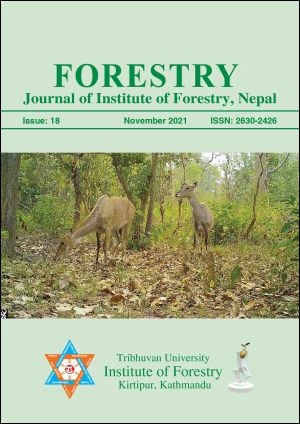Status and types of Chiuri (Diploknema butyracea (Roxb.) H.J.Lam) owned by Indigenous Chepang Communities in Makwanpur, Nepal
DOI:
https://doi.org/10.3126/forestry.v18i01.41805Keywords:
Chiuri, Types, Khoria, Seed, ChepangAbstract
Chiuri (Diploknema butyracea) is a medium-sized tree that inhabits in sub-Himalayan tracks of steep slopes and cliffs at an elevation of 400 to 1400 meters from west to east of Nepal. It belongs to Sapotaceae family of plant kingdom. This study was conducted to assess status of Chiuri tree in Raksirang Rural Municipality (RRM) with particular interest to location, khoria aspect, age and types. Primary data were collected through questionnaire survey, interviews, informal discussion, etc. whereas secondary data were collected through desk review. Biometric data such as seed size and seed count per kg of seeds were measured using measuring scale and weighing balance. Four types of Chiuri namely Wayo, Lanyo, Titiya and Tomyo were found in RRM depending on ripening time of fruit. Most of them have Chiuri older than 30 years of age and their khoria facing south direction. Chiuri takes 6-10 years to start fruiting from seedling. Based on survey, Wayo and Lanyo were found in lower elevation whereas Titiya and Tomyo were found in higher elevation. The timing of fruit ripening was different but followed a pattern of types located in lower elevation fruiting earlier. However, defoliation timing was different and was not influenced by elevation.
Downloads
Downloads
Published
How to Cite
Issue
Section
License
© Tribhuvan University, Institute of Forestry




